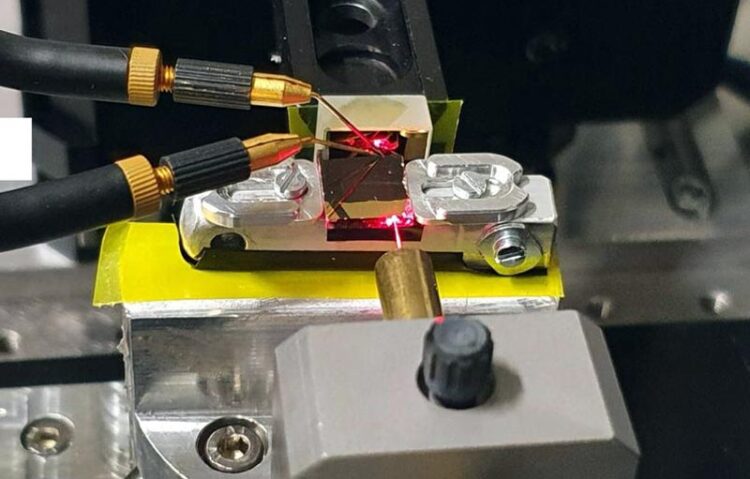Miniaturized infrared detectors

The experimental setup: A red alignment laser was used to visualize the beam path from the fiber into the optical waveguide and its reflection at a gold mirror. Two microprobes were used to contact the photoconductor, the size of which is in the subwavelength range. Image: Empa
Integration on a chip.
Tremendous effects on spectrometers of different kinds – and in various fields
Transport at Nanoscale Interfaces
Phone +41 58 765 48 74
ivan.shorubalko@empa.ch
Media Contact
All latest news from the category: Information Technology
Here you can find a summary of innovations in the fields of information and data processing and up-to-date developments on IT equipment and hardware.
This area covers topics such as IT services, IT architectures, IT management and telecommunications.
Newest articles

Innovative 3D printed scaffolds offer new hope for bone healing
Researchers at the Institute for Bioengineering of Catalonia have developed novel 3D printed PLA-CaP scaffolds that promote blood vessel formation, ensuring better healing and regeneration of bone tissue. Bone is…

The surprising role of gut infection in Alzheimer’s disease
ASU- and Banner Alzheimer’s Institute-led study implicates link between a common virus and the disease, which travels from the gut to the brain and may be a target for antiviral…

Molecular gardening: New enzymes discovered for protein modification pruning
How deubiquitinases USP53 and USP54 cleave long polyubiquitin chains and how the former is linked to liver disease in children. Deubiquitinases (DUBs) are enzymes used by cells to trim protein…



